How to Mix Metals in a Kitchen Decor in 2025
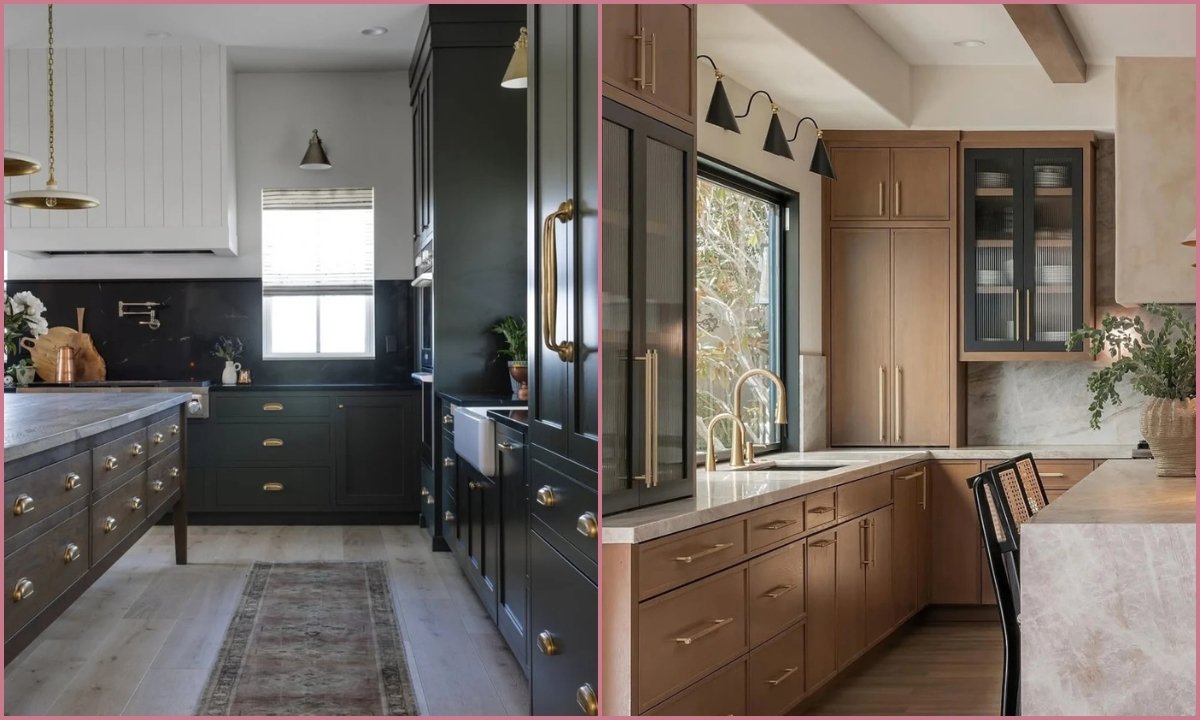
Have you ever walked into your kitchen and felt that nagging thought, did you really just choose a brushed nickel faucet when all your cabinet hardware is matte black?
You probably stand there wondering if you messed it up, because you don’t want space to feel mismatched, but you also don’t want everything looking too plain and flat either.
You might be surprised, but you can actually mix metals in a way that will make your kitchen feel layered, modern, and intentional.
And when you keep reading, you’ll see how you can use a few simple rules, design tips, and real examples to confidently mix metals without second-guessing a single choice.
Let’s jump into it!
Why Mix Metals in a Kitchen?
If you stick to just one metal finish in your kitchen, you’ll probably notice how flat and predictable everything starts to feel.
When you mix metals, they will give the kitchen a contrast, depth, and personality without ever need of a full remodel.
Your eyes naturally get drawn to details like the faucet, the handles, or even the lighting fixtures.
You also get the bonus of using different tones to highlight cabinet colors and countertop textures you might not have noticed before.
Think of it like the way you layer jewelry, you don’t wear one piece and stop, and stack it to complete the outfit.
When you combine finishes with intention, you show that your kitchen isn’t just decorated, it’s designed by you.
6 Ways to Mix Metals in a Kitchen
1. Start With One Main Metal
Every kitchen you design needs one anchor metal that sets the entire tone. Most of the time, you’ll already have stainless steel appliances doing the job for you.
But if you don’t, you can easily choose chrome, nickel, or even matte black as the finish you’ll lean on the most.
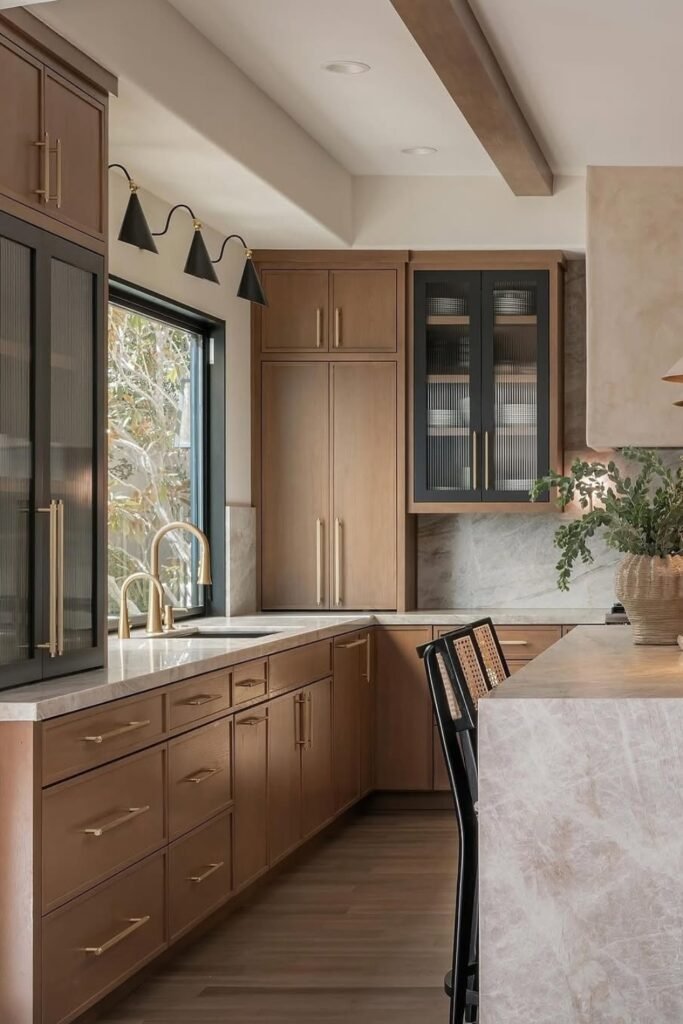
You just need to make sure this main metal shows up more often than the rest so space feels consistent.
Once you lock that in, you can let other metals act as accents, and you’ll see how this keeps everything grounded while still give a variety to your kitchen.
2. Limit Yourself to Two or Three Finishes
When you mix too many metals, they can quickly make your kitchen feel chaotic instead of stylish.
You usually get the best balance with two metals, or three if you repeat each one enough times, so they don’t look random.
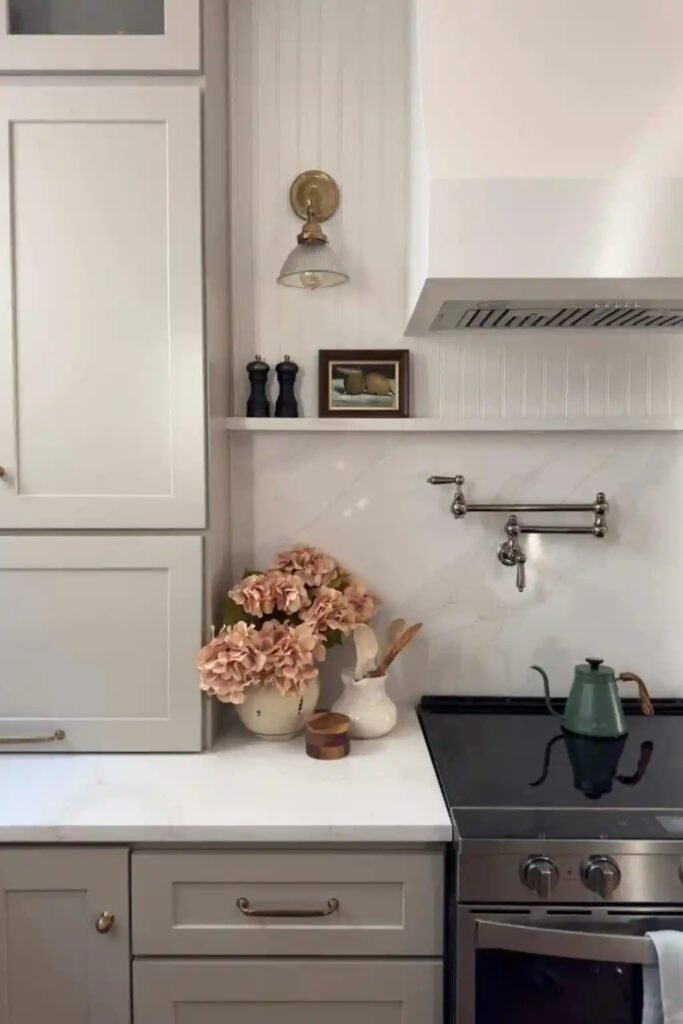
You can pair stainless steel with brass for a modern yet warm feel, and when you will add matte black, you’ll notice how it ties everything together.
But if you push past three, you’ll distract your own eye and end up with visual clutter.
When you keep your palette simple, you give the kitchen that instantly feels more cohesive.
3. Balance Warm and Cool Tones
When you bring warm metals like brass, copper, or gold into your kitchen, it instantly gives a sense of coziness.
But when you lean on cool metals like nickel, chrome, and stainless, they create that crisp and clean vibe.
If you pair them, you’ll see how much interest it can add but it need balance.
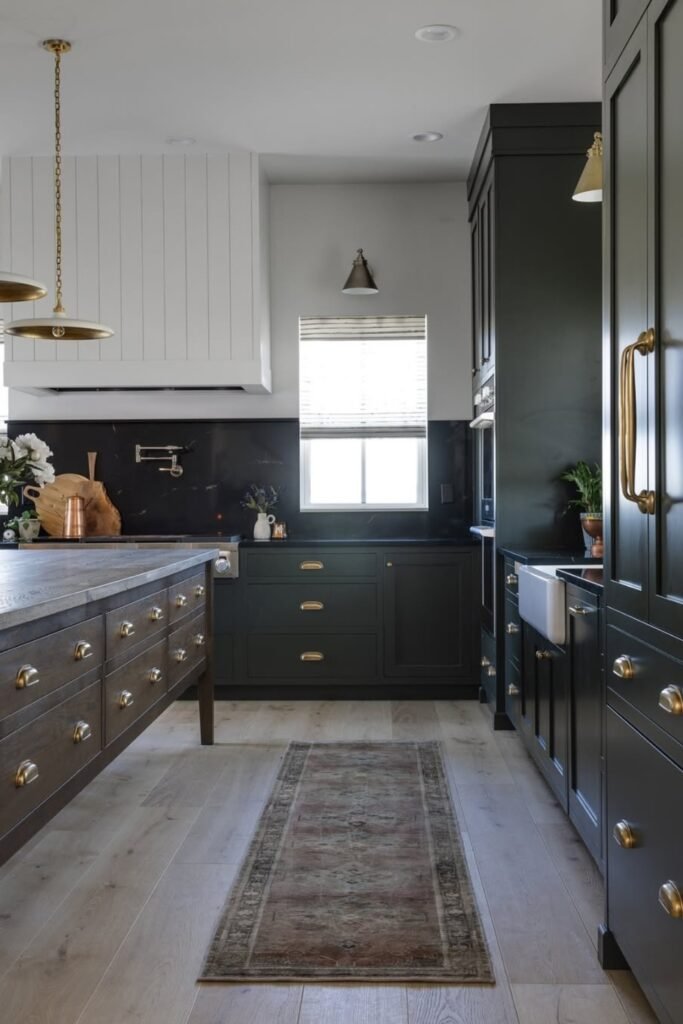
When you go heavy with warm tones, you risk making the space feel weighed down, and when you use too many cool tones, you make it feel cold.
You can solve this by splitting them evenly or letting one dominant finish contrast with a warm or cool accent, and that’s how you make the design feel intentional instead of mismatched.
4. Repeat Each Metal for Flow
When you use a single piece of metal just once, you make it look like a mistake. You need to repeat every finish at least two times in your kitchen to make it feel right.
If you choose a brass faucet, you should bring brass into the cabinet hardware or pendant lights so they connect the look.
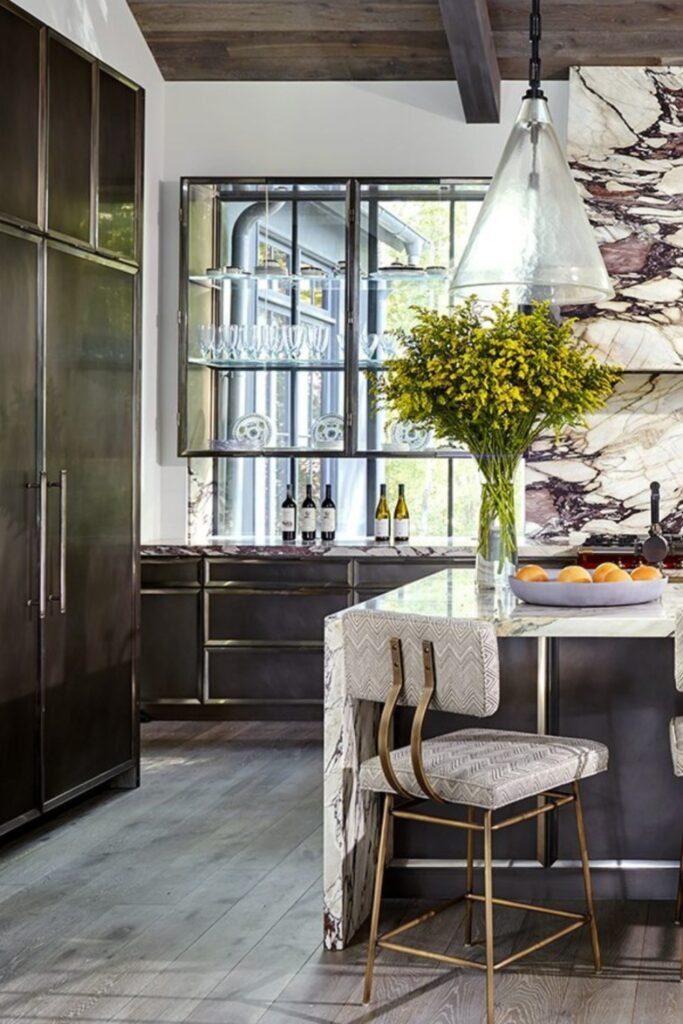
When you add matte black handles, make sure to echo them in the light fixtures or even on shelf brackets.
You’ll notice that repetition ties finishes across different zones and gives a flow. Without it, you’ll be left with a mix that feels random instead of well-planned.
5. Match the Sheen, Not Just the Color
When you choose metals, you see that they come in polished, brushed, or matte finishes, and you realize the sheen makes a big difference.
When you go for polished metals, you will get reflection and glamour, while brushed finishes give a softer and more casual feel.
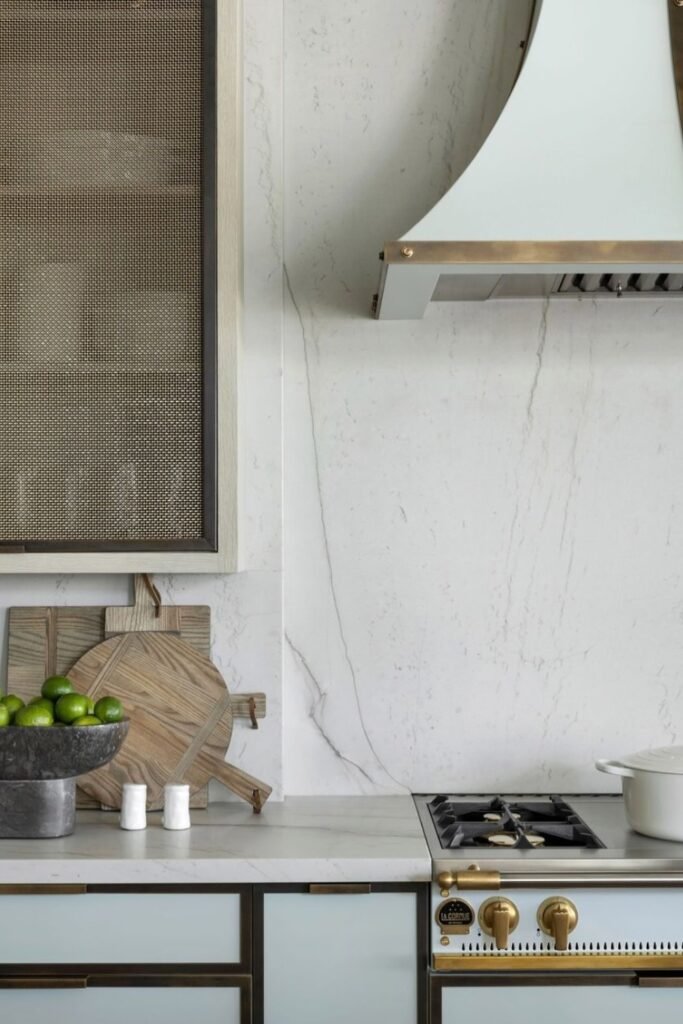
You can mix polished with brushed, but it needs to repeat each sheen in more than one spot.
For example, you can pair a polished nickel faucet with polished knobs, while brushed brass pulls connect with brushed light fixtures.
When you match the sheen, you make the whole look feel intentional.
6. Divide Your Kitchen Into Zones
The easiest way for you to manage metals is by treating your kitchen in zones.
You can let faucets and sinks use one finish, give your cabinet hardware another, and choose a third for your lighting.
When you approach it this way, you will create balance while still giving each zone its own personality.
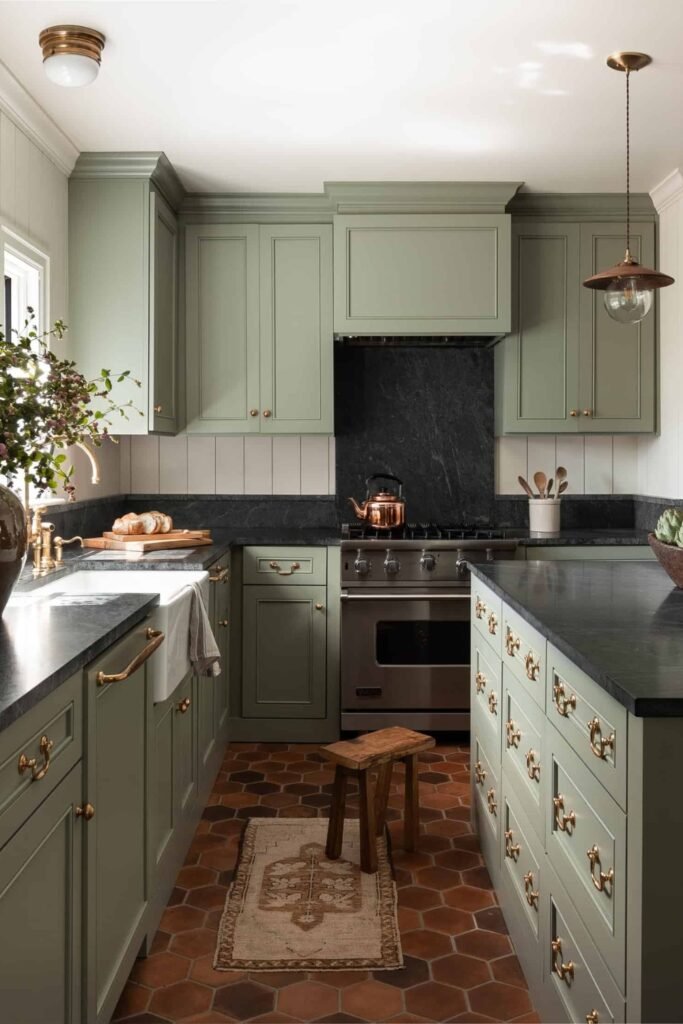
For example, you can let stainless steel appliances set the base, bring in black pulls to add depth, and choose brass pendant lights to bring warmth.
When you divide your kitchen this way, you will be able to vary without chaos, and make each area work together to complete the look.
Is There a Right Way to Combine Brass, Black, and Stainless in Your Kitchen?
You might think that mixing brass, black, and stainless steel in your kitchen sounds risky, but when you do it right, you will see how sleek and intentional it looks.
You need to pick a dominant finish first, and then you can use the other two as accents across different zones.
When you repeat each finish in more than one spot like hardware, lighting, or faucet it will help space flow naturally.
With the right balance, you’ll give the kitchen a layered, designer-style that feels both modern and timeless.
Conclusion
You’ll see that mixing metals in your kitchen isn’t about strict rules, it’s about creating balance that works for you.
When you start with one main finish, add one or two accents and repeat them in multiple spots, so you make the look feel intentional instead of random.
You need to pay attention to tones, sheen, and lighting, and you’ll avoid the mistakes that usually make metals clash.
When you follow this approach, you give your kitchen depth, style, and personality without ever feeling overwhelmed.
FAQs
How many metal finishes are too many in one kitchen?
You can stick to two metals for a clean, polished look, and go for three if you make sure you balance them carefully.
You’ll notice that when you use more than three, your kitchen can start to feel cluttered.
As long as you repeat each finish in more than one spot, you give yourself a cohesive and stylish space instead of one that looks mismatched.
Can I mix polished and matte finishes together?
Yes, you can but make sure it looks deliberate. If your faucet is polished, repeat that shine on knobs or sconces.
If your pulls are matte, echo them in lighting or shelving brackets. Repeating each sheen at least twice keeps the mix from feeling random.
You may also love to read!
